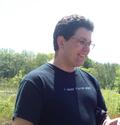Cited By
View all- Esche S(2024)Testing Programming Aptitude through Commonsense ComputingProceedings of the 26th Australasian Computing Education Conference10.1145/3636243.3636255(104-113)Online publication date: 29-Jan-2024
- Finnie-Ansley JDenny PLuxton-Reilly AMerkle LDoyle MSheard JSoh LDorn B(2022)Play Your Cards RightProceedings of the 53rd ACM Technical Symposium on Computer Science Education - Volume 110.1145/3478431.3499343(857-863)Online publication date: 22-Feb-2022
- Skalka JDrlik MBenko LKapusta JRodríguez del Pino JSmyrnova-Trybulska EStolinska ASvec PTurcinek P(2021)Conceptual Framework for Programming Skills Development Based on Microlearning and Automated Source Code Evaluation in Virtual Learning EnvironmentSustainability10.3390/su1306329313:6(3293)Online publication date: 17-Mar-2021
- Show More Cited By




